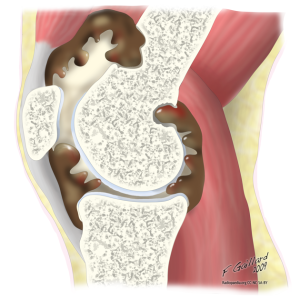
Now, I’m not hear to scare you. But there are many conditions out there that are so uncommon that we often don’t even know that they exist. Unfortunately, sometimes these conditions may walk into our clinics and have us shaking our heads in disbelief and asking ourselves… ‘why don’t you fit into that diagnosis!’. I think for many pigmented villonodular synovitis (PVNS) of the knee is one of these diagnoses. It is quite rare, however, it presents similarly to many of the conditions that we as sports physiotherapists treat on a daily basis. This article discusses PVNS including assessment, diagnosis, and the treatment options.
In the world of sports physiotherapy the assessment and diagnosis of knee pathology is a daily event. As we are all well aware, an accurate diagnosis is achieved only via a skilled subjective and objective examination. Thus, sports physiotherapists will regularly rely on the results of special orthopaedic or clinical tests to make a diagnosis. This is well covered ground on this site, as we regularly the discuss the diagnostic accuracy of clinical tests for common conditions. However, there is always new research regarding the accuracy of existing techniques and the development of new ones. This leads to new research on the use of joint line fullness to assist in the diagnosis of meniscal tears. This article will discuss the technique and its potential clinical utility.



